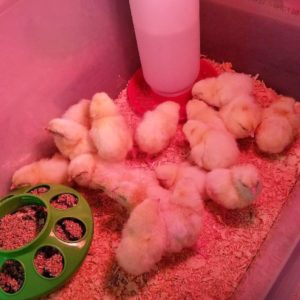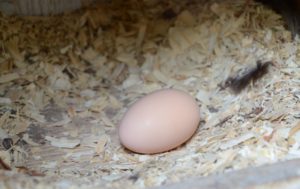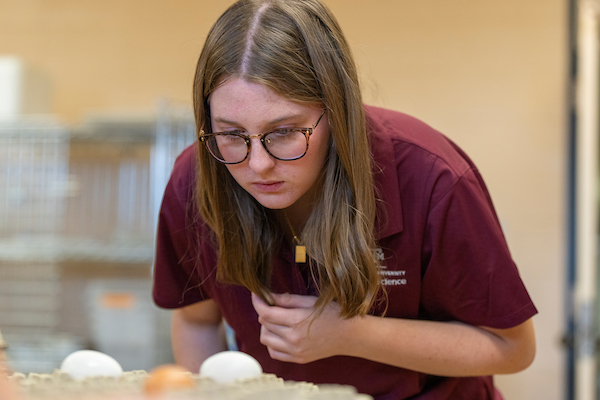Backyard chicken flocks for beginners
Producing fresh eggs or meat takes some know-how
Backyard chicken flocks for meat or egg production are a growing trend among rural, suburban and even urban dwellers, said a Texas A&M AgriLife Extension Service expert.
But Craig Coufal, Ph.D., AgriLife Extension poultry specialist and associate professor in the College of Agriculture and Life Sciences Department of Poultry Science at Texas A&M University said increasing numbers of consumers want to know the source of their food. Producing eggs and poultry at home is part of that movement.
But there are a number of considerations for backyard poultry beginners before they start a flock, he said.
There is a range of informational resources available to prospective and established backyard poultry producers, Coufal said.
AgriLife Extension and the Department
of Poultry Science have a wide array of information regarding small poultry production operations and backyard
flocks, including publications, webinars and a contact list of experts.
Backyard poultry production expectations
Investing in a barnyard flock is an upfront and ongoing expense. So, owners should consider what their expectations for the flock will be.
Is it for the satisfaction of producing your own eggs and/or meat? Is it to make a profit or reduce the food bill?
“I will tell you now that it’s cheaper to go to the grocery store and buy eggs,” Coufal said. “But there is something about having homegrown eggs. It’s like producing your own vegetables, and I understand that. But it takes commitment and work to produce meat and eggs on a break-even scale much less turn a profit. But it can be done.”
Good nutritious feed helps egg-producing hens “build” their eggs, Coufal said. Even free-range chickens should be provided supplemental feed if producers want to maximize egg production.
“A young egg-producing breed should be producing an egg a day at around twenty-five weeks,” Coufal said. “That tapers off as they get older, but you will maximize production if you provide the right amount of protein, nutrients and vitamins to their diet and help the hen build her egg.”
Chickens can live for many years, but their egg production will reduce as they age. So maximum egg production, and thus reduced cost, is achieved with younger hens.
If the backyard flock is producing for commercial sale, owners should know the applicable rules and regulations governing the operation, he said. Backyard producers in urban or suburban areas should also look at applicable regulations regarding chicken numbers and noise and odor abatement before investing time and money.
“Backyard flocks have grown in popularity over the last several years,” Coufal said. “It’s fun and satisfying work, but there is a lot more to it than just buying some chicks and collecting eggs.”
Chicks for a backyard flock

Coufal said it’s important for backyard flocks to include birds from reputable sources. This reduces the chance of buying incorrect sexes depending on production desires and birds that could be carrying disease without showing any symptoms.
Look for National Poultry Improvement Plan, NPIP, certified hatcheries, Coufal said. Many reputable poultry producers can be found online and will deliver vaccinated chicks.
When purchasing ask for documentation regarding disease testing for diseases like Pullorum-Typhoid, Coufal said. Buying from certified growers also reduces the possibility of exposing an existing flock to a disease when new birds are introduced.
Poultry housing preparations
Planning before means preparation for all possibilities including manure management/disposal; dead bird disposal, predator control and housing designed to keep birds safe and comfortable through weather extremes, he said.
Backyard growers need to provide good shelter, fresh water and nutritious feed for their flock.
A chicken coop can be a simple shelter but should be well ventilated and include protection from extreme weather, including rain and winter cold and summer heat, Coufal said. It should be a sanitary space that allows mobility and protects the flock from predators, like hawks, dogs, raccoons, and coyotes, at night.
Coops should be constructed of wire strong enough to prevent raccoons from tearing. It is also a good idea to put wire underground, or pavestones, tile, brick or wire around the perimeter to prevent animals from digging under it.

If a solid material or the ground serves as the floor, then 3-4 inches of clean litter such as wood shavings, rice hulls or builder’s sand should be provided, he said. Mobile coops that can be moved periodically are a good way to reduce sanitation concerns.
Chicks need a proper brooding environment for the early growth period, he said. This typically includes a separate smaller enclosed area with wood shavings, ground corncobs or another good litter source to protect the young birds and that maintains warmer temperatures until they are 3-4 weeks old.
Laying hens need a place to nest and lay eggs. A nest box should be 12-inch by 12-inch by 14-inch and contain hay or shavings suitable for nesting material.
Always make sure to provide clean water, Coufal said.
Eggs, meat or both?
Coufal said selecting chicken breeds would be a matter of preference and performance expectations.
There are literally hundreds of breeds and varieties to choose from. The best producing egg layers are white or brown Leghorn strains. The more popular heritage breeds that will lay brown eggs include Production Reds; Barred Plymouth Rocks; Rhode Island Reds; Silver Laced Wyandottes and New Hampshire Reds.
Dual-purpose breeds for both meat and egg production include Buff Orpingtons; Black Australorps; Dark Cornish; Cochins and Delawares. Breeds strictly for meat production are referred to as broilers and are often called a Cornish Cross. They are usually white-feathered but are also available in other feather colors.
“Like Angus and Jersey cows, which are bred for meat and milk, respectively, poultry are bred with characteristics that make them better for egg or meat production. There are also species bred for their looks that may not be the best for egg or meat production. It comes down to what the grower wants out of their flock.”
Disease management
Coufal said environmental controls to prevent the spread of disease is vital to backyard flocks.
“It’s to prevent introduction of a viral disease that will affect your flock’s health,” he said. “I have a pair of rubber boots I use specifically for checking my birds. This reduces the chances of me bringing something into my flock or transferring something my flock is immune to into someone else’s birds.”
Here are some tips to reduce disease transmissions:
- Clean up spilled feed to reduce attracting wild
birds and rodents, which can carry diseases. - Minimize birds’ contact with manure, which is a
source of bacteria. - Keep habitat improvements and attractants,
including feeders, houses and baths for wild birds, and waterfowl ponds away
from areas frequented by the flock. - New birds should be quarantined for at least six
weeks before they are introduced to the existing flock.
“New birds should be kept as far away from the flock as possible,” he said. “Monitor the new birds for disease symptoms, especially respiratory issues. Always handle sick or quarantined birds after the other birds and wash your hands thoroughly as well as change or disinfect your boots.”
Coufal also doesn’t recommend co-mingling birds of significantly different ages. Older birds can be aggressive toward younger birds that might result in harm to the younger birds.
Vaccinating your flock
Birds should be vaccinated for Marek’s disease, Newcastle disease and fowl pox, Coufal said. Many certified breeders will vaccinate chicks for Marek’s and Newcastle. But birds should be vaccinated for fowl pox at five weeks old.
“Vaccinations are necessary and go a long way for reducing problems in your flock,” he said. “Most vaccinations are a one-time thing unless you want to give your birds a booster. They just reduce the risk of a virus that a wild bird or a bug or you might introduce to them.”
Safe handling and salmonella

Coufal also warned that backyard producers should be mindful about biosecurity measures to prevent exposure to salmonella from birds. Basic hygiene like handwashing and changing clothes after handling birds and eggs greatly reduces the chance of infection.
Salmonella occurs naturally on poultry, he said. Birds are carriers but don’t show signs of the bacteria.
Children are especially susceptible because of their tendency to pet and hold birds and then directly infect themselves by putting their fingers in their mouths, Coufal said.
“It is very rare that viral diseases from chickens can pass on to humans, but there are plenty of bacterial infections that birds can transfer to humans,” he said. “It’s a matter of common-sense hygiene whenever you handle fresh eggs or tools used in and around the coop.”





